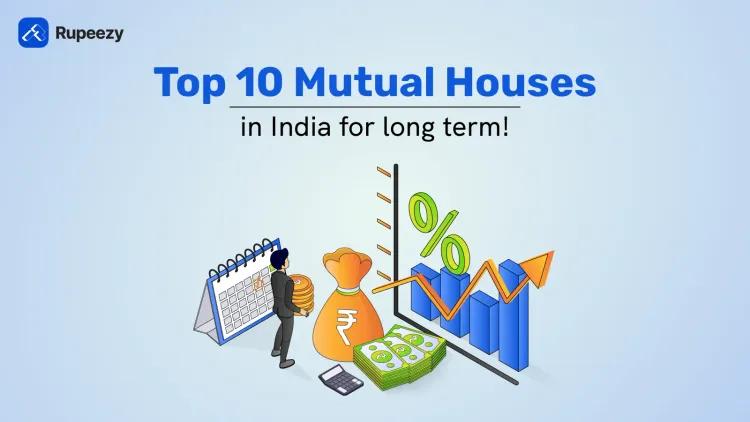What Is a Mutual Fund Fact Sheet?


00:00 / 00:00
A mutual fund fact sheet is the fund’s one-page résumé: a concise, standardised snapshot of its objective, strategy, benchmark, fees, performance, risks, and holdings. Read correctly, it lets you compare schemes on equal footing and avoid decisions based on marketing alone. In this guide, you’ll learn how to decode returns (CAGR, rolling, calendar-year), risk metrics (standard deviation, beta, alpha, Sharpe and Sortino, drawdown), portfolio signals (concentration, sector or credit mix, duration), and true costs (TER, exit load, turnover). You’ll also get a quick-reference metrics table, a 10-point pre-investment checklist, common red flags, and notes for SIP investors as well as index and ETF strategies. By the end, you’ll know how to use a factsheet to judge fit, risk, and value with confidence.
Why Fact Sheets Matter
Fact sheets let you compare schemes using consistent, India-centric metrics. They highlight what the scheme invests in, who runs it, how much it costs, how it has performed against a relevant Indian benchmark, and how risky the journey has been. Used well, a fact sheet helps you ignore noise and focus on the data that drives outcomes.
Who Produces Them and How Often They’re Updated
The AMC prepares the fact sheet, typically every month. Because performance and portfolio holdings change, check the “as on” dates separately for performance, portfolio, and risk data. Always use the latest version.
Anatomy of a Mutual Fund Fact Sheet
Here’s what you’ll typically find and why it matters.
Scheme Snapshot
Scheme name, category as per SEBI (e.g., Large Cap, Flexi Cap, ELSS, Liquid, Short Duration, Aggressive Hybrid, Balanced Advantage), plan (Direct vs Regular), option (Growth vs IDCW), inception date, and ISIN. Confirm you’re viewing the correct plan and option because fees and returns differ.
Investment Objective & Strategy
A plain-English statement of the scheme’s goal (e.g., “long-term capital appreciation”) and the approach (e.g., “invests primarily in large-cap Indian equities” or “duration-managed portfolio of high-quality debt”). Scan for constraints like market-cap focus, sector limits, credit quality, or duration band.
Benchmark & Category
The yardstick used to evaluate the scheme (e.g., NIFTY 50 TRI, NIFTY Midcap 150 TRI, NIFTY 500 TRI, CRISIL Composite Bond Fund Index, CRISIL 10-Year Gilt Index). Under SEBI’s benchmarking framework, many schemes disclose a Primary Benchmark and, where relevant, a more granular secondary benchmark. A suitable benchmark is essential for fair comparisons.
NAV, AUM & Minimums
Net Asset Value (Rs. per unit), Assets Under Management (Rs. crore), minimum lump sum and SIP amounts. Larger AUM can aid stability and trading efficiency, but excessive size can hinder certain styles (e.g., small-cap).
Expenses, Loads & Plans
Total Expense Ratio (TER) for Direct and Regular plans, exit load structure, and any other disclosed charges. Direct plans avoid distributor commissions and generally have lower TER than Regular plans. Even small TER differences compound over time.
Portfolio Holdings
Top holdings with weights and number of stocks/bonds. Check concentration risk (e.g., top 10 too high), overlap with your existing portfolio, and whether holdings match the stated mandate.
Allocation Breakdowns
For equity: sector mix, market-cap allocation, and sometimes style exposure. For debt: credit quality (Sovereign/AAA/AA and below), maturity profile, average maturity, modified duration, and yield-to-maturity (YTM). These exposures drive most of the scheme’s risk/return.
Performance Data
Point-to-point and annualised returns across common periods (1, 3, 5, 10 years and since inception), often alongside benchmark and category averages. Many Indian fact sheets also show SIP returns (XIRR). Prefer full-cycle records and rolling-return consistency rather than cherry-picked periods.
Risk & Consistency Metrics
Volatility (standard deviation), Sharpe/Sortino ratios, beta and alpha vs the benchmark, maximum drawdown, and upside/downside capture ratios. For index funds and ETFs, look for tracking difference and tracking error.
Risk-O-Meter & PRC (Debt)
SEBI’s Risk-o-Meter shows risk from Low to Very High. Debt schemes may also show the Potential Risk Class (PRC) grid combining interest-rate risk (I/II/III) and credit risk (A/B/C). Match these to your tolerance and time horizon.
Portfolio Turnover & Liquidity
Turnover indicates trade frequency and potential impact costs. For debt, note issuer concentration and liquidity profile; for equity, sustained high turnover can increase costs and taxes in taxable accounts.
Fund Manager & Tenure
Lead manager(s), years on the strategy, and the investment team’s structure. Long, stable tenure boosts confidence that historic results reflect the current decision-makers.
Distributions & Tax Pointers
IDCW history and payout frequency. Taxation depends on scheme type and prevailing law; equity-oriented and other schemes can be taxed differently. Always verify current tax rules and consider your holding period and account type before investing.
Disclaimers & Methodology Notes
Footnotes may explain calculation methods (e.g., returns net of expenses), benchmark changes, and data sources. Read them to avoid misinterpretation.
How to Read the Numbers (Plain-English Guide)
Returns: CAGR, Rolling, Calendar-Year
Annualised return (CAGR) smooths multi-year performance. Rolling returns reveal consistency across market phases. Calendar-year returns expose behaviour in bull and bear years. Prefer funds that beat an appropriate Indian benchmark over full cycles rather than isolated windows.
Risk: Volatility, Sharpe, Sortino, Beta, Alpha, Drawdown
Volatility measures the bumpiness of returns; lower isn’t automatically better if it slashes returns. Sharpe (return per unit of total volatility) and Sortino (per unit of downside volatility) compare efficiency. Beta shows sensitivity to the benchmark; alpha estimates value added after risk. Maximum drawdown signals the worst peak-to-trough fall vital for sleep-at-night comfort.
Costs: TER, Exit Load, Turnover
Your net return equals gross return minus costs. Focus on TER differences between Direct and Regular plans, any exit load within the stated period, and portfolio turnover (a proxy for hidden trading costs). For index funds/ETFs, scrutinise the tracking difference.
Portfolio: Concentration, Overlap, Style, Credit, Duration
Check top-10 weight and sector concentration, style or factor tilts, and overlap with your current holdings to avoid unintended bets. In debt schemes, understand duration (rate sensitivity), YTM (expected pre-expense yield), and credit-quality mix to gauge default and interest-rate risk.
Key Metrics Cheat Sheet (India)
Metric | What it means | How to use it |
TER (Direct vs Regular) | Ongoing annual cost | Prefer Direct if you don’t need distributor services |
Fee if redeemed within a period | Align with your time horizon to avoid penalties | |
Benchmark (TRI) | Comparison index with dividends | Ensure it matches the mandate (e.g., NIFTY 50 TRI) |
Standard deviation | Volatility of returns | Judge comfort with ups and downs |
Sharpe/Sortino | Return per unit of risk | Compare efficiency across peers |
Beta/Alpha | Sensitivity vs benchmark and excess return | Prefer positive alpha with sensible beta |
Max drawdown | Worst historical fall | Stress-test your tolerance |
Tracking diff/error (passive) | Lag and variability vs index | Smaller is better for index funds/ETFs |
SIP XIRR | Annualised return for periodic investing | Useful for long-term SIP evaluators |
Top-10 weight | Concentration risk | High values increase idiosyncratic risk |
A 10-Point Pre-Investment Checklist
Objective and SEBI category match your goal and horizon.
Benchmark is appropriate and consistently used (prefer TRI).
5 -10 year and rolling records show consistency vs benchmark.
Risk metrics and Risk-o-Meter level fit your tolerance.
TER is competitive; choose Direct or Regular intentionally.
Portfolio concentration and sector/credit mix align with the mandate.
Fund manager tenure covers most of the performance record.
Turnover and potential tax impact are reasonable for your account.
AUM and liquidity support efficient execution.
No red-flag footnotes or unexplained benchmark/strategy changes.
Red Flags to Watch
Benchmark switched recently without a clear reason. Performance shown for a period that flatters results while peers use standard windows. Excessive concentration or style drift vs mandate. Manager churn without commentary. Large and frequent IDCW or capital gains distributions create tax drag in taxable accounts. For passive funds, persistent tracking gap or a high tracking error.
Special Notes for SIP Investors
Focus on rolling and downside-capture metrics. A steadier scheme can deliver better SIP outcomes even if headline 10-year CAGR looks similar to a more volatile peer. Review SIP XIRR vs benchmark and category median.
Special Notes for Index Funds & ETFs
For passive strategies, the heroes are TER, tracking difference, and tracking error, not alpha. Confirm replication method (full replication vs sampling), rebalancing schedule, and liquidity (including bid–ask spreads for ETFs). Consistent tracking in stressed markets matters as much as in calm periods.
Conclusion
A fact sheet is your fast filter to decide whether a scheme deserves deeper research. Confirm the objective and SEBI category match your goal, check all-in costs (TER and exit load), and evaluate behaviour using risk-adjusted performance, concentration, and the Risk-o-Meter/PRC. Apply the checklist, scan for red flags such as unexplained benchmark changes or persistent tracking gaps in passive funds, then validate details in the SID/KIM and consider tax implications before investing. Spend a few minutes with the latest fact sheet for each candidate; in India’s market, small edges in cost, consistency, and risk control compound into better long-term outcomes.
FAQs:
Is a fact sheet the same as the SID or KIM?
No. The Scheme Information Document (SID) and Key Information Memorandum (KIM) are the legal and comprehensive documents. The fact sheet is a concise monthly summary for screening. Use the fact sheet first, then verify details in the SID/KIM.
How often are numbers updated?
Most AMCs publish monthly, but “as on” dates can differ across sections. Holdings can lag, performance is usually month-end, and TER can change. Always check dates.
Which single number should I prioritise?
There isn’t one. Evaluate fit (objective and SEBI category), cost (TER, exit load), and behaviour (risk/return vs benchmark) together.
Are high returns always good?
Not if they rely on excessive risk, concentration, or style drift. Consistency and risk-adjusted returns matter more than headline CAGRs.
What if two schemes look identical?
Compare TER (Direct vs Regular), tracking metrics if passive, manager tenure if active, and concentration. Small differences here compound into large outcome gaps.
The content on this blog is for educational purposes only and should not be considered investment advice. While we strive for accuracy, some information may contain errors or delays in updates.
Mentions of stocks or investment products are solely for informational purposes and do not constitute recommendations. Investors should conduct their own research before making any decisions.
Investing in financial markets are subject to market risks, and past performance does not guarantee future results. It is advisable to consult a qualified financial professional, review official documents, and verify information independently before making investment decisions.

All Category









